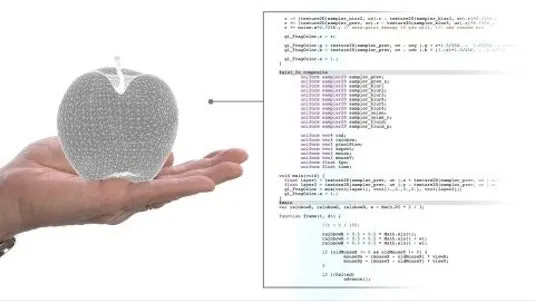
3d Printer Maintenance Extruder Steps and PID Calibration 
This course provides an overview of 3D printer maintenance, extruder steps, and PID calibration. It covers topics such as GCode console/terminal, calibration checklist, calibration tools, adjusting extrusion wheels, over and under extrusions, adjusting belts, and additional 3D printer maintenance tips. Participants will gain the knowledge and skills necessary to properly maintain and calibrate their 3D printer. ▼
ADVERTISEMENT
Course Feature
![]() Cost:
Cost:
Free
![]() Provider:
Provider:
Youtube
![]() Certificate:
Certificate:
Paid Certification
![]() Language:
Language:
English
![]() Start Date:
Start Date:
On-Demand
Course Overview
❗The content presented here is sourced directly from Youtube platform. For comprehensive course details, including enrollment information, simply click on the 'Go to class' link on our website.
Updated in [February 21st, 2023]
This course provides learners with the knowledge and skills to maintain and calibrate 3D printers. Learners will gain an understanding of the GCode console/terminal, 3D printer calibration checklist, calibration tools, and how to adjust 3D printer extrusion wheels, belts, and other components. They will also learn how to adjust the extruder E-step and temperature PID calibration. This course is ideal for those who want to learn the basics of 3D printer maintenance and calibration, as well as those who want to gain a deeper understanding of 3D printing maintenance and PID tuning.
[Applications]
After completing this course, participants should be able to apply the knowledge they have gained to maintain and calibrate their 3D printer. This includes adjusting the extrusion wheels, belts, and temperature PID calibration. Additionally, they should be able to identify and troubleshoot any over or under extrusions.
[Career Paths]
1. 3D Printer Technician: 3D printer technicians are responsible for the maintenance and repair of 3D printers. They must be knowledgeable in the operation of 3D printers, as well as the software and hardware associated with them. They must also be able to troubleshoot and diagnose any issues that may arise. As 3D printing technology continues to evolve, 3D printer technicians will need to stay up to date on the latest developments in order to provide the best service possible.
2. 3D Printer Engineer: 3D printer engineers are responsible for designing and developing 3D printers. They must have a strong understanding of 3D printing technology and be able to create innovative solutions to improve the performance of 3D printers. As 3D printing technology continues to evolve, 3D printer engineers will need to stay up to date on the latest developments in order to create the most efficient and reliable 3D printers.
3. 3D Printer Software Developer: 3D printer software developers are responsible for creating and maintaining the software used to control 3D printers. They must have a strong understanding of 3D printing technology and be able to create software that is both user-friendly and efficient. As 3D printing technology continues to evolve, 3D printer software developers will need to stay up to date on the latest developments in order to create the most efficient and reliable software.
4. 3D Printer Researcher: 3D printer researchers are responsible for researching and developing new 3D printing technologies. They must have a strong understanding of 3D printing technology and be able to create innovative solutions to improve the performance of 3D printers. As 3D printing technology continues to evolve, 3D printer researchers will need to stay up to date on the latest developments in order to create the most efficient and reliable 3D printers.
[Education Paths]
1. Mechanical Engineering: Mechanical engineering is a broad field that involves the design, development, and manufacture of machines and tools. It is one of the oldest and broadest engineering disciplines. Mechanical engineers are involved in the development of new technologies, such as 3D printing, robotics, and automation. They also work on improving existing technologies, such as improving the efficiency of 3D printers and developing new materials for 3D printing. The field is constantly evolving, and new developments in 3D printing and robotics are creating exciting opportunities for mechanical engineers.
2. Computer Science: Computer science is a field of study that focuses on the design, development, and implementation of computer systems and software. It is a rapidly growing field, and computer scientists are increasingly involved in the development of 3D printing technologies. Computer scientists are responsible for developing the software and algorithms that control 3D printers, as well as developing new methods for 3D printing.
3. Materials Science: Materials science is a field of study that focuses on the properties and behavior of materials. It is an important field for 3D printing, as it is responsible for the development of new materials that can be used in 3D printing. Materials scientists are also involved in the development of new 3D printing processes, such as selective laser sintering and fused deposition modeling.
4. Industrial Design: Industrial design is a field of study that focuses on the design and development of products. Industrial designers are involved in the development of 3D printing technologies, as they are responsible for designing the products that are printed. Industrial designers are also involved in the development of new 3D printing processes, such as multi-material printing and 3D printing with metal.
Course Provider

Provider Youtube's Stats at AZClass
Discussion and Reviews
0.0 (Based on 0 reviews)
Explore Similar Online Courses

Typography Critique Week 3 - Two Point Sizes One Weight

Facebook DETR ML Coding Series End to end object detection with transformers

Python for Informatics: Exploring Information

Social Network Analysis

Introduction to Systematic Review and Meta-Analysis

The Analytics Edge

DCO042 - Python For Informatics

Causal Diagrams: Draw Your Assumptions Before Your Conclusions

Whole genome sequencing of bacterial genomes - tools and applications

Interactive 3D Graphics

Bioprinting: 3D Printing Body Parts


Start your review of 3d Printer Maintenance Extruder Steps and PID Calibration